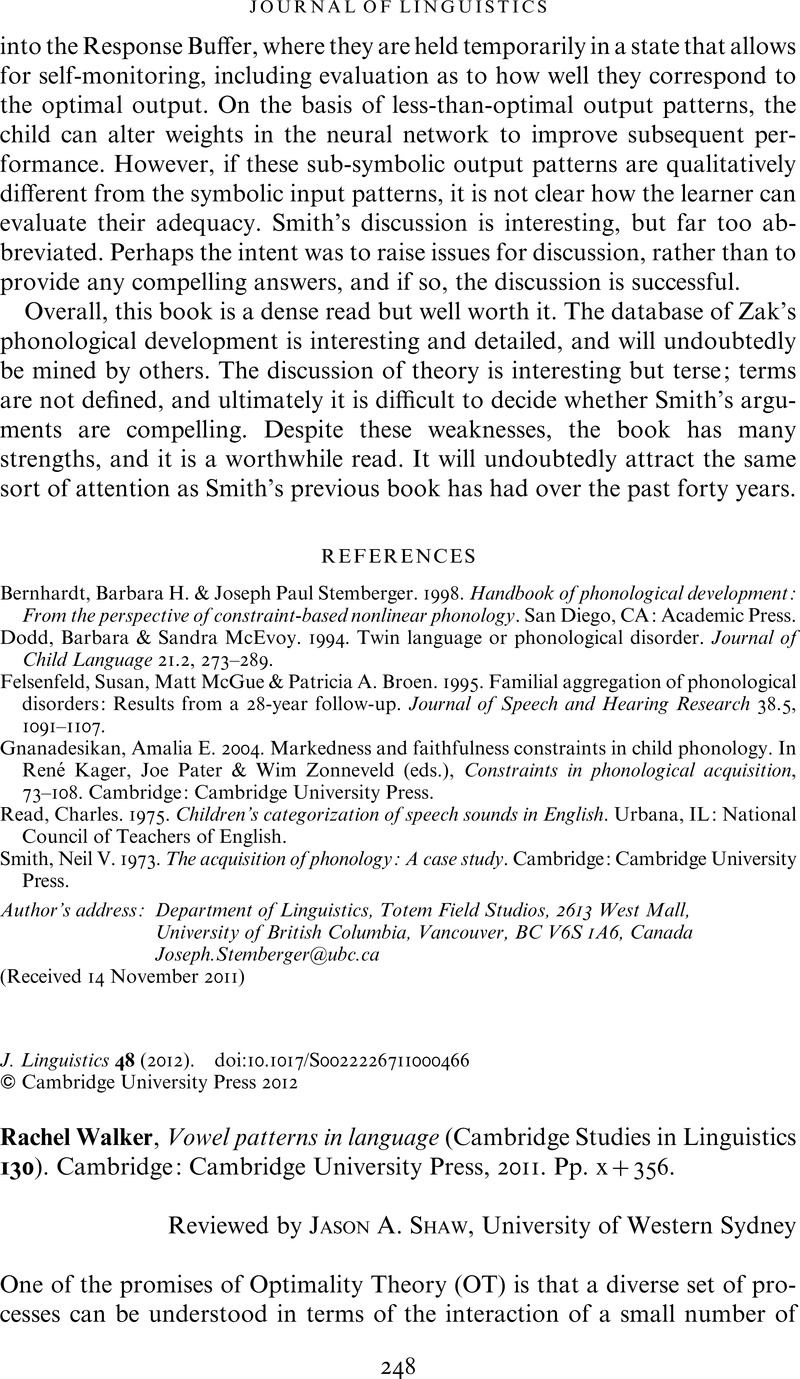No CrossRef data available.
Article contents
Rachel Walker, Vowel patterns in language (Cambridge Studies in Linguistics 130). Cambridge: Cambridge University Press, 2011. Pp. x+356.
Review products
Rachel Walker, Vowel patterns in language (Cambridge Studies in Linguistics 130). Cambridge: Cambridge University Press, 2011. Pp. x+356.
Published online by Cambridge University Press: 24 January 2012
Abstract
An abstract is not available for this content so a preview has been provided. Please use the Get access link above for information on how to access this content.

- Type
- Reviews
- Information
- Copyright
- Copyright © Cambridge University Press 2012
References
REFERENCES
Campos-Astorkiza, Rebeka. 2009. The role and representation of minimal contrast and the phonetics–phonology interaction. Munich: Lincom Europa.Google Scholar
Finley, Sara. 2009. Morphemic harmony as featural correspondence. Lingua 119.3, 478–501.CrossRefGoogle Scholar
Hualde, José Ignacio. 1989. Autosegmental and metrical spreading in the vowel-harmony systems of northwestern Spain. Linguistics 27.5, 773–805.CrossRefGoogle Scholar
Pater, Joe. 2009. Morpheme-specific phonology: Constraint indexation and inconsistency resolution. In Parker, Stephen G. (ed.), Phonological argumentation: Essays on evidence and motivation, 1–33. London: Equinox.Google Scholar
Uchanski, Rosalie M. 2005. Clear speech. In Pisoni, David B. & Remez, Robert E. (eds.), The handbook of speech perception, 207–235. Oxford: Blackwell.CrossRefGoogle Scholar


